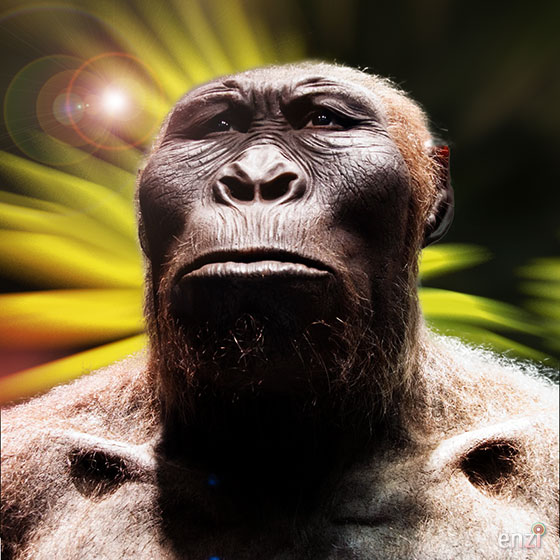Paranthropus boisei
Paranthropus boisei lived in Eastern Africa (Ethiopia, Kenya, Tanzania, Malawi) about 2.3 to 1.2 million years ago. Like other members of the Paranthropus genus, P. boisei is characterised by a specialised skull with adaptations for heavy chewing. Chewing force, enabled by muscles anchored on a strong saggital crest on the midline of the top of the skull, were focused on the large back teeth (molars and premolars). P. Boisei had flared cheekbones giving the species a wide, dish-shaped face. This facial structure created a large opening for bigger jaw muscles to pass through and support massive cheek teeth four times the size of a modern human’s. This species had larger teeth than Paranthropus robustus, a flatter bigger-brained skull than Paranthropus aethiopicus and the thickest dental enamel of any known early human.

Paranthropus boisei
Previously known as ‘Zinjanthropus’ after Mary Leakey’s discovery of the ‘Zinj’ skull in 1959 at Olduvai Gorge in northern Tanzania, P. boisei lived with several other species of early humans during its 1.1 million year existence. It is unlikely Homo sapiens originated from this species and belonged to one of other side branches of human evolution.
Males averaged 5 ft 4 inches (137 cm) in height and 108 lbs (49 kg) in weight. Females measured 4 ft 1 inch (124cm) tall and weighed 75 lbs (34kg) displaying a high level of sexual dimorphism.
By comparing a male Paranthropus boisei individual to a male Australopithecus africanus who lived during a similar time period (3.3–2.1 Mya), you’ll see why the species Paranthropus got the name ‘robust.’ While both males are on average 4 ft 6 inches tall, the average male P. boisei was 18 pounds heavier than a male A. africanus of the same height. Even P. boisei females were slightly larger and heavier than what scientists had seen before in the fossil record of other early humans.
Male and female P. boisei individuals were closer in body size than individuals of other species of early humans preceding them.
This species was nicknamed for its big teeth and strong chewing muscles, which attached to the large crest on the skull. Paranthropus boisei likely ate tough foods like roots and nuts. But dental microwear patterns seen on P. boisei teeth are more similar to living fruit-eaters with fine striations, rather than large, deep pits seen in the teeth of living species that eat grass, tough leaves and stems, or other hard, brittle foods. While the morphology of P. boisei skull and teeth indicate it could have chewed hard or tough foods, dental microwear analysis does not demonstrate that they regularly did so—suggesting a wider, more diverse diet for P. boisei. It’s possible that this species only ate hard or tough foods during times when it’s preferred resources were scarce, relying on them as fallback foods.
This species lived in environments that were dominated by grasslands but also includes more closed, wet habitats associated with rivers and lakes.
